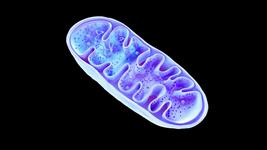CMN Weekly (24 May 2024) - Your Weekly CRISPR Medicine News
By: Karen O'Hanlon Cohrt - May. 24, 2024
Top picks
- In an article published this week in Cell, a team in the United States and Japan reveal the findings from an in utero CRISPR screen with single-cell transcriptomic phenotyping across embryonic to adult mouse brains and peripheral nervous systems. By testing more than 80 vectors representing diverse AAV serotypes combined with a transposon system, the team improved labelling efficacy and accelerated in vivo gene delivery from weeks to days. The proof-of-principle screen identified the pleiotropic effects of Foxg1, highlighting its tight regulation of distinct networks essential for cell fate specification of Layer 6 corticothalamic neurons. The team notes that the platform can label >6% of cerebral cells which is above the current state-of-the-art efficacy at <0.1% by lentivirus, and which allows the analysis of more than 30,000 cells in one experiment.
Research
- Scientists in the United States report on a series of bone-marrow-homing lipid nanoparticles that deliver mRNA to a broad group of cell types in the bone marrow, including healthy and diseased haematopoietic stem cells, leukaemic stem cells, B cells, T cells, macrophages and leukaemia cells. They demonstrate that the nanoparticles were able to achieve Cre-recombinase-mediated genetic deletion in bone-marrow-engrafted leukaemic stem cells and leukaemia cells, and they also achieved CRISPR-Cas and base editing in a mouse model expressing human sickle cell disease phenotypes for potential foetal haemoglobin reactivation and conversion from sickle to non-sickle alleles. Their findings, published in this week in Nature Nanotechnology, also reveal that diverse cell types in the bone marrow niche can be edited using bone-marrow-homing lipid nanoparticles.
- In an article published this week in Human Gene Therapy, a team of researchers in the United States report that AAV5 delivery of CRISPR-Cas9 mediates genome editing in the lungs of a large animal model. Building on their previous work, which resulted in a dual AAV CRISPR platform that supports effective editing in the airways of mice, they now show that intratracheal delivery of CRISPR-Cas9 in AAV5 can edit a housekeeping gene or a disease-related gene in the lungs of young rhesus monkeys. They observed 8% editing of the ACE2 gene in lung lobes after single-dose administration, and single-nuclear RNA-Seq revealed that AAV5 transduces multiple cell types in the caudal lung lobes, including alveolar cells, macrophages, fibroblasts, endothelial cells, and B cells.
- Scientists in China report the development of a genome-editing tool based on human exonuclease 1, which they refer to as exonuclease editor. In their hands, exonuclease editor resulted in increased homology-directed repair (HDR) efficiency and reduced NHEJ repair frequency compared to Cas9, with an elevated HDR/indel ratio. They also note that the precision of the new editor was superior to the fusion of Cas9 with E1B or DN1S, two previously reported precision-enhancing domains. Their findings are published this week in BMC Biology.
- In an article published this week in PLoS Computational Biology, scientists in the United States propose a novel statistical method called CRISPRi-DR (for Dose-Response model) that incorporates both sgRNA efficiencies and drug concentrations in a modified dose-response equation. With the goal to identify CRISPRi mutants whose relative abundance is suppressed (or enriched) in the presence of a drug when the target protein is depleted - reflecting synergistic behaviour - they used CRISPRi-DR to re-analyse data from a recent chemical-genetic interaction experiment in Mycobacterium tuberculosis to identify genes that interact with antibiotics. They also propose that their approach can be generalised to non-CGI datasets, which they demonstrate using a CRISPRi dataset for E. coli growth on different carbon sources.
- Scientists in China recently reported an autologous cell-based approach to treating inherited liver diseases. To this end, they performed large-scale expansion of proliferating patient-derived hepatocytes and using CRISPR-Cas9, corrected pathogenic mutations in fumarylacetoacetate hydrolase (FAH) or ornithine transcarbamylase (OTC), which cause hereditary tyrosinemia type I and ornithine transcarbamylase deficiency, respectively. They observed that when administered to mice, the edited hepatocytes repopulated the injured mouse liver in high numbers and underwent maturation, successfully treating mice with tyrosinemia following transplantation. The findings were published in Cell Stem Cell.
- In an article published in Nucleic Acids Research, scientists in China report a novel recombinant AAV capsid mutant, Y704T, that eliminates leaky expression from homology-directed repair DNA donor templates. They demonstrate that the Y704T mutant maintains normal functional in receptor interaction, intracellular trafficking, nuclear entry, uncoating, and second-strand synthesis, but specifically exhibiting defects in transcription, which they find to be independent of inverted terminal repeats, promoter types, and RNA polymerases.
Industry
- ERS Genomics Limited and drug discovery company IRBM announced on Monday that they have entered into a non-exclusive CRISPR-Cas9 license agreement. The agreement grants IRBM access to ERS’ CRISPR-Cas9 patent portfolio. See the official press release for further details.
- Verve Pauses Enrollment in Base Editing Trial after Adverse Events. This brief article in Human Gene Therapy summarises the circumstances surrounding Verve Therapeutics' voluntary decision to pause the ongoing Heart-1 Phase 1b trial of VERVE-101 after a patient experienced asymptomatic Grade 3 transient serum alanine aminotransferase elevation and thrombocytopenia within the first four days after dosing.
Detection
- A team in China and Uzbekistan report a novel Cas14a1-based detection assay for Salmonella typhi. The strategy, which they have dubbed 'Single Primer isothermal amplification integrated-Cas14a1 biosensor (SPCas)', leverages a novel primer design featuring an RNA-DNA primer and a 3'-biotin-modified primer, both of which bind the same single-stranded DNA (ssDNA) in the presence of the target gene. The RNA-DNA primer undergoes amplification and is blocked at the biotin-modified end. Strand replacement is then initiated to generate ssDNA; this process is assisted by RNase H and Bst enzymes, which activates the trans-cleavage activity of Cas14a1 even in the absence of a PAM sequence. They demonstrate diagnostic sensitivity (for Salmonella typhi)of 5 CFU/mL. Their findings were published in Biosensors and Bioelectronics.
CRISPR screens
- To understand the role of long non-coding RNAs (lncRNAs) in monocyte function and differentiation, a team at multiple institutes in the United States carried out two independent high-throughput CRISPRi screens. The screens identified non-coding and protein-coding genes that positively or negatively regulate inflammation and differentiation, and the team chose to further investigate the lncRNA LOUP [lncRNA originating from upstream regulatory element of SPI1 since it was a top hit in both screens. In brief, their investigations indicate that LOUP is a multi-functional locus that regulates macrophage differentiation and inflammatory signalling. Their findings were published this week in PNAS.
- In an article published this week in Nature Biotechnology, a team in the United States share their findings of massively parallel base-editing screens to generate thousands of variants at gene loci annotated with known or potential clinical relevance. In summary, they discovered diverse putative gain-of-function (GOF) and loss-of-function (LOF) mutations, including in PIK3CD and the genes which encodes its regulatory subunit, PIK3R1, LCK, SOS1, AKT1 and RHOA. They found that base editing of PIK3CD and PIK3R1 variants in T cells harbouring an engineered T cell receptor specific to a melanoma epitope or in different generations of CD19 CAR T cells demonstrates that discovered GOF variants enhanced signalling, cytokine production and lysis of cognate melanoma and leukaemia cell models, respectively. They also report that generations of CD19 CAR T cells engineered with PIK3CD GOF mutations demonstrate enhanced antigen-specific signalling, cytokine production and leukaemia cell killing, including when benchmarked against other recent strategies.
Reviews
- Exploring molecular mechanisms, therapeutic strategies, and clinical manifestations of Huntington's disease. This review investigates the molecular complexities of Huntington's disease by highlighting the pathogenic mechanisms initiated by the mutant huntingtin protein and describes new and promising directions for Huntington's disease research and treatment, including CRISPR-based strategies and emerging neuroprotective approaches to intervention.
- Latest advances on new promising molecular-based therapeutic approaches for Huntington's disease. This review covers the latest molecular-based therapeutic strategies for Huntington's disease, including DNA-targeting techniques, post-transcriptional huntingtin-lowering approaches, and novel methods to clear the mHTT protein. The authors focus on ongoing clinical trials and the latest pre-clinical studies to explore the progress of emerging potential Huntington's disease therapeutics.
- CRISPR/Cas9 screening: unraveling cancer immunotherapy's 'Rosetta Stone'. This review provides a summary of recent advances in CRISPR-Cas9-based screening for cancer immunotherapy and overviews the immunotherapeutic targets identified via CRISPR screening based on cancer-type classification.
- Altered cancer metabolism and implications for next-generation CAR T-cell therapies. The authors of this review examine the metabolic adaptations of cancer cells and their impact on immune cells, highlighting the competition for nutrients and the accumulation of immunosuppressive metabolites. They also explore emerging strategies to enhance CAR T-cell metabolic fitness and persistence, including genetic engineering and metabolic reprogramming.
- Tools for editing the mammalian mitochondrial genome. Carlos T. Moraes, Professor at University of Miami, reviews the latest developments within in vivo mitochondrial DNA editing in animals, and discusses the relevance of these advances for the study of mitochondrial function as well as their clinical applications.
- New insights into the therapeutic options to lower lipoprotein(a). This narrative review discusses lipoprotein(a) [Lp(a)], which is an established risk factor for cardiovascular disease, as a therapeutic target for such diseases. The authors summarise current strategies to lower LpA, including antisense oligonucleotides and small interfering RNAs (siRNAs) directed towards apolipoprotein(a) [Apo(a)], some of which are already in the clinic, as well as earlier-stage clinical strategies including gene-editing approaches and Apo(a) inhibitors.
News from CRISPR Medicine News
- On Monday, we published an interview with Masoud Nasri PhD and Malte Ritter, both at Universitäts Klinikum Tübingen. Together with colleagues and collaborators, they recently reported a new CRISPR-based strategy to treat congenital neutropenia caused by ELANE mutations. The new strategy, termed MILESTONE offers an effective and safe way to restore neutrophil development by inhibiting ELANE expression via promoter editing rather than modifying its coding sequence. Read the interview here.
To get more CRISPR Medicine News delivered to your inbox, sign up to the free weekly CMN Newsletter here.
Tags
ArticleMissing linksNewsCMN WeeklyERS GenomicsVerve Therapeutics, Inc.
CLINICAL TRIALS
IND Enabling
Phase I
Phase II
Phase III
Recurrent or Progressive High-grade Glioma, (NCT06737146)
Sponsors:
Suzhou Maximum Bio-tech Co., Ltd.
Sponsors:
Suzhou Maximum Bio-tech Co., Ltd.
IND Enabling
Phase I
Phase II
Phase III
Advanced Peritoneal Malignancies or Abdominal Metastatic Solid Tumors, (NCT06912152)
Sponsors:
Zhejiang University
Sponsors:
Zhejiang University
IND Enabling
Phase I
Phase II
Phase III







